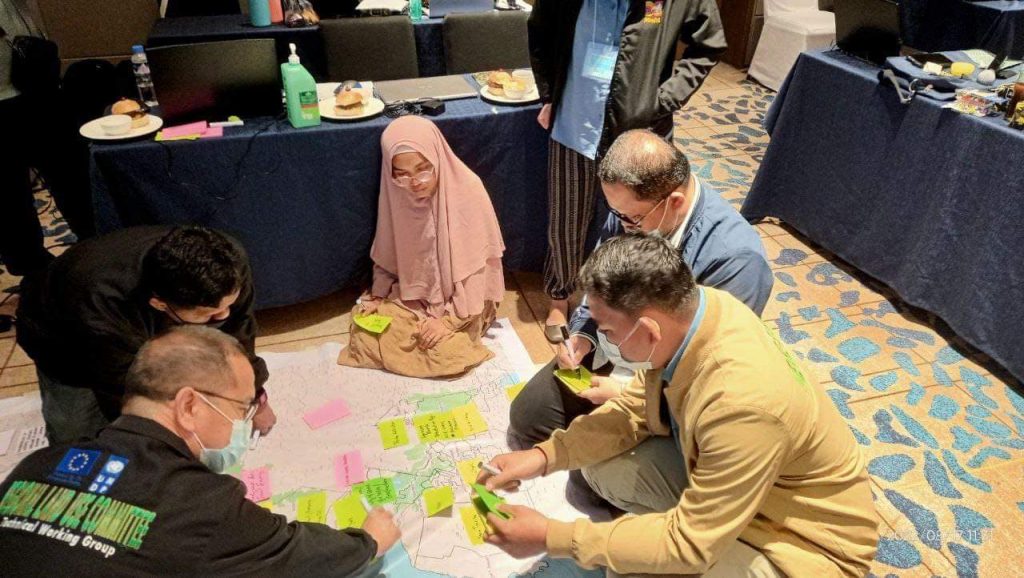
COTABATO CITY — In line with the ongoing formulation of the 2nd Bangsamoro Development Plan (BDP) for 2023-2028, the Regional Land Use Committee – Technical Working Group (RLUC-TWG) successfully conducted a 5-day refinement workshop last August 15-19, 2022 to update and improve the Bangsamoro Spatial Strategy, the third chapter of the said development plan.
In his message, Director Suharto Wahab of the Ministry of Human Settlements and Development (MHSD) said that this is a critical workshop as it will describe the physical characteristics and strategies for a spatially integrated Bangsamoro region, stressing that spatial planning should take into account the stakeholder, policy, assessment, transformation, integration, alignment, and linkages.
Said workshop also aimed to strengthen the economic development of the region by means of managing and optimizing its geographic space potentials that stimulate growth while ensuring ecological integrity.
Furthermore, Engr. Mohajirin T. Ali, Director General of the Bangsamoro Planning and Development Authority (BPDA), acknowledged the contribution of the Ministry of Interior and Local Government (MILG) in the realization of the said workshop. He also underscored that gathering various ministries is considered a milestone achievement in completing the said development plan that will serve as a guide in implementing high-impact projects.
“We must ensure that the local government units are always on board because if they are on board, it is guaranteed that the programs will be delivered to them,” he stressed.
Some technical staff from the National Economic and Development Authority (NEDA) Region XII and the Mindanao Development Authority (MinDA) facilitated said workshop, thereby sharing their technical expertise in identifying potential growth centers and developing a spatial framework.
Dr. Carmel P. Matabang, NEDA XII Assistant Regional Director, provided some inputs and recommendations for the spatial and development strategy of the BARMM, in her belief that the BARMM can be a stronghold of Muslim culture as well as the Philippines’ Halal hub.
“You are planning for BARMM’s mid-term (2nd BDP) and long-term (Regional Spatial Development Framework) plans, and you will be contributing to legacy, especially when these high-impact projects are implemented,” she emphasized.
Meanwhile, MinDA representatives Engr. Makmod Pasawilan and Kate Pasawilan presented the Mindanao Development Corridors (MinDC) that focuses on optimizing regional growth centers based on their potentials and strategic roles in Mindanao’s overall development.
According to Engr. Pasawilan, the MinDC will pave the way for a more connected and globally competitive Mindanao, saying “We must consider Mindanao as a whole. We look for BARMM comparative advantages like Halal Industry, Islamic Banking, and Barter Trading”.
Moreover, the Local Planning and Coordinating Division of the BPDA serves as the secretariat of the RLUC, one of the special committees under the Bangsamoro Economic and Development Council. LPCD leads in writing the Bangsamoro Spatial Strategy for the 2nd BDP. (Mary Lovella Lao-Lastimosa with reports from Hannan Ibrahim, BPDA-BARMM)



